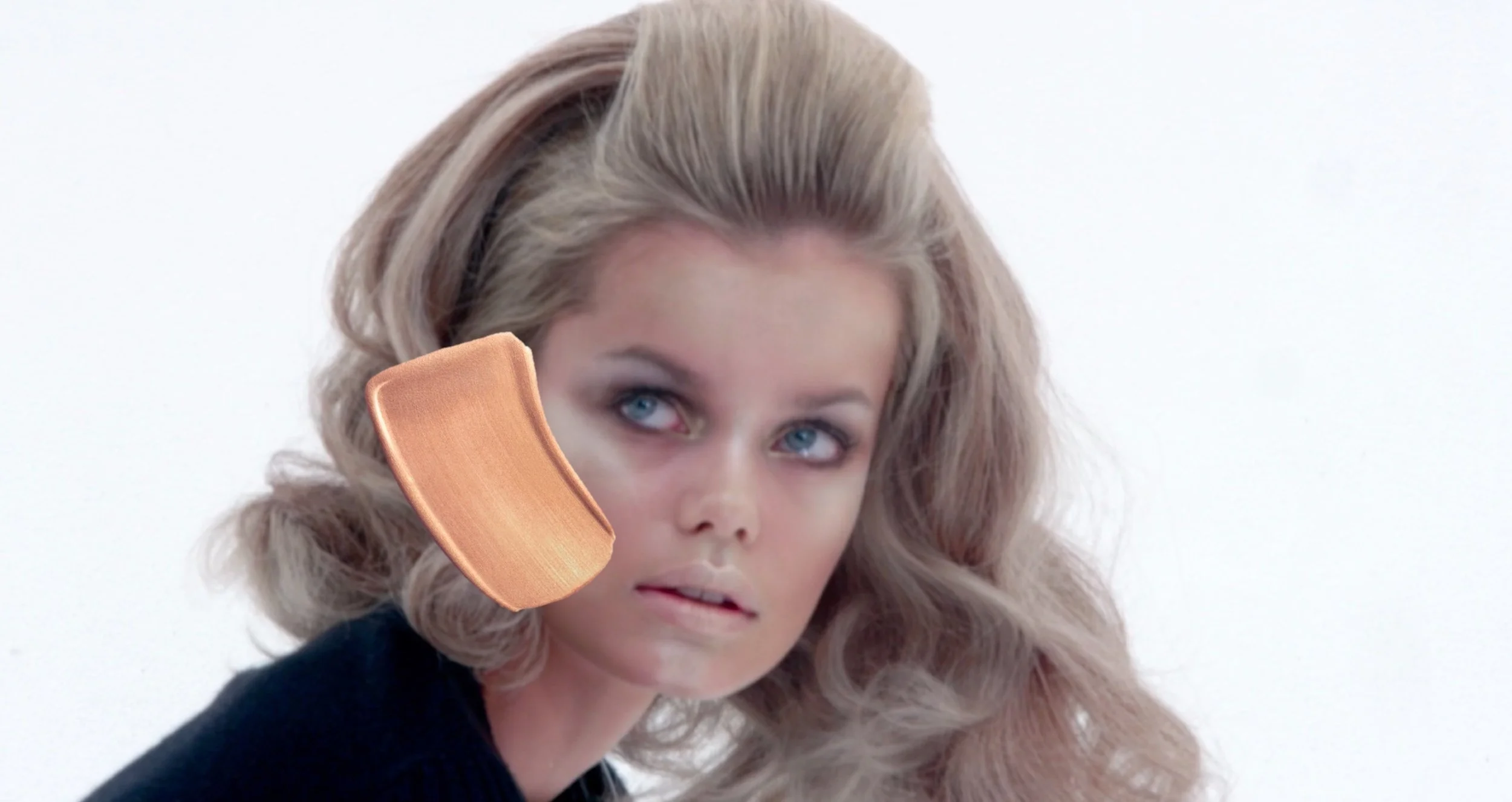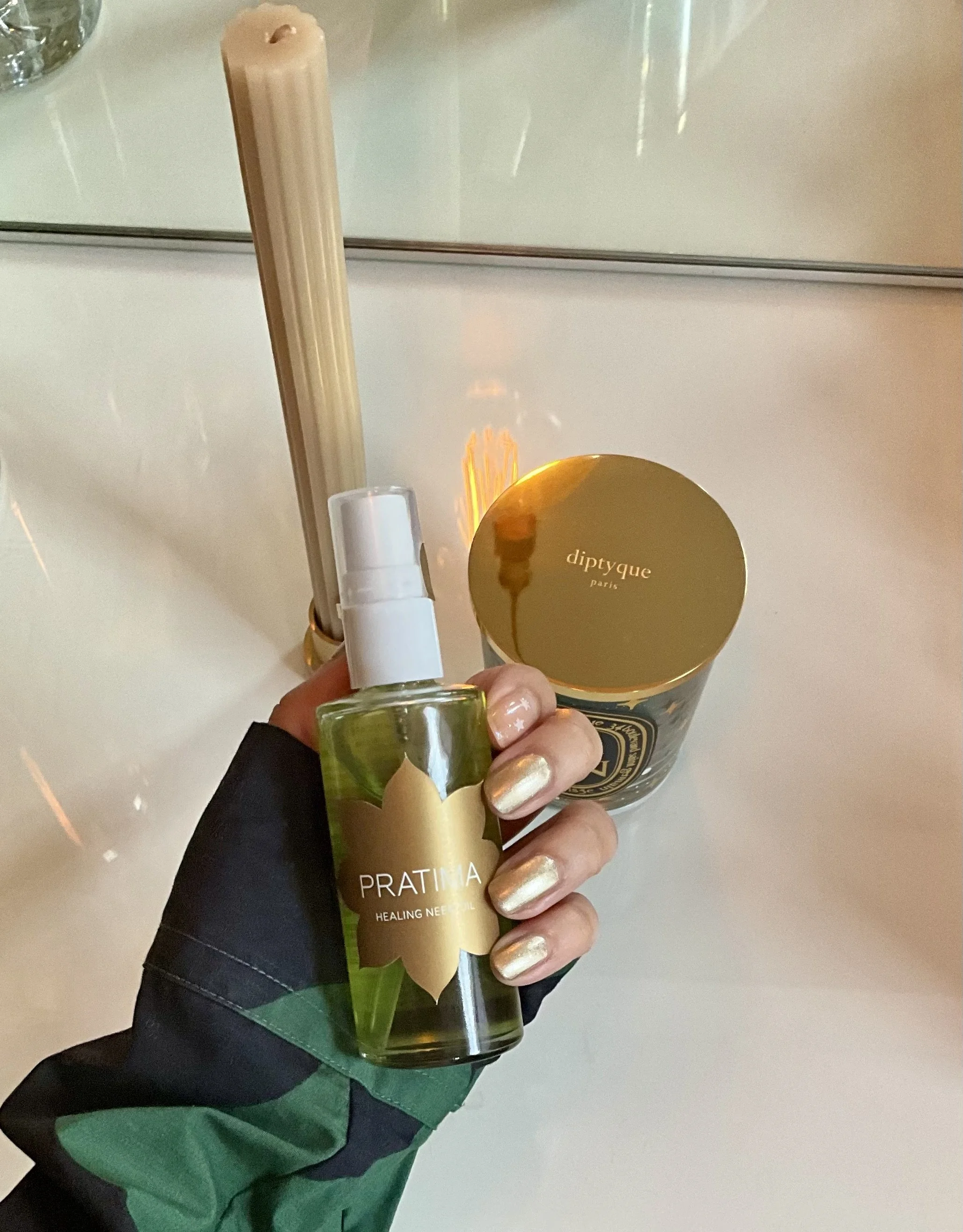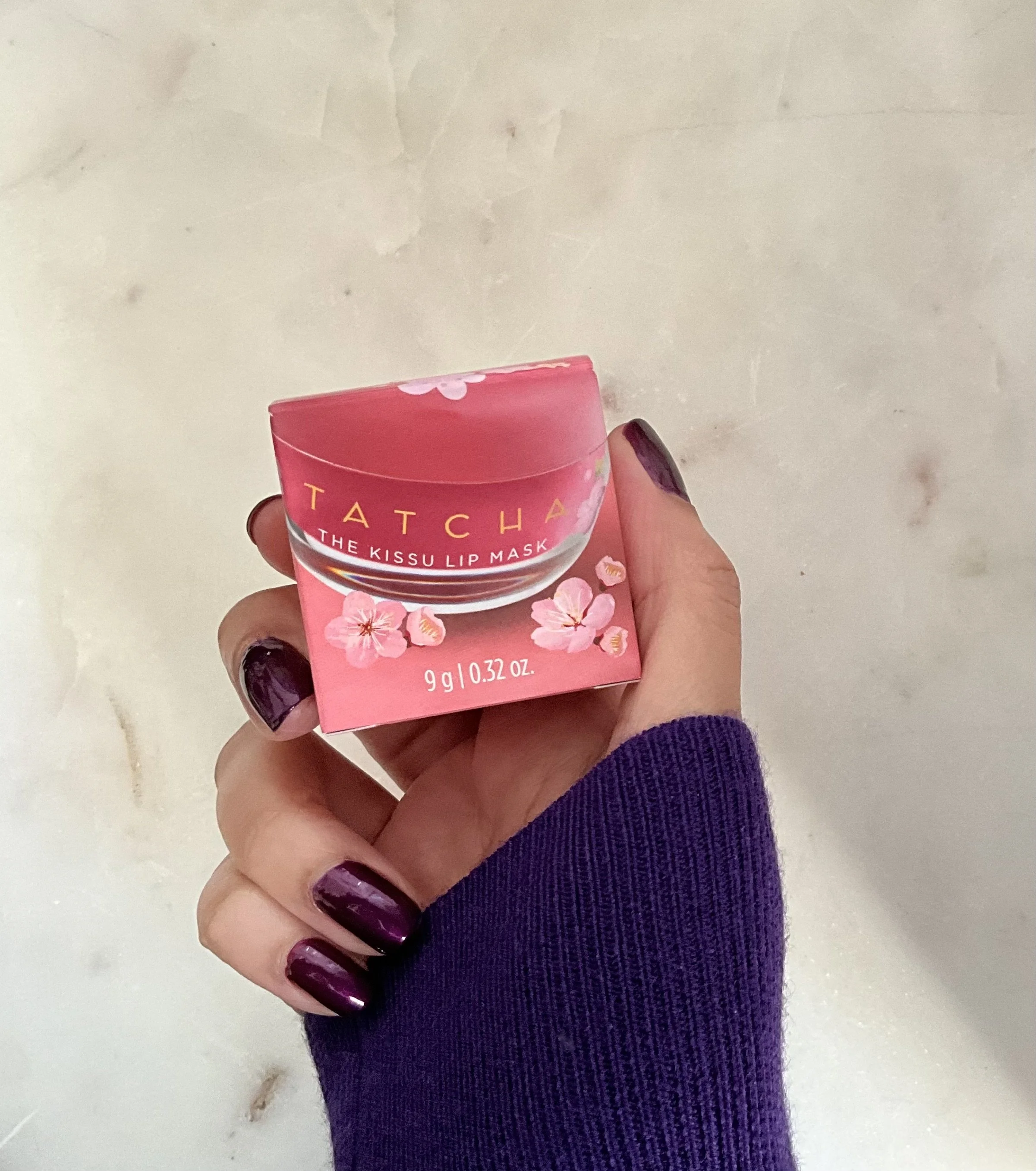The Highlights: The Beauty of Facial Marma
Highlight + Heal
That September high. Highlights that is.
Going into Autumn with a leftover tan is reminiscent of 90’s Ralph Lauren ads. Fresh-faced for a fresh season with fresh allure.
Over the last decade or more, highlighting and contouring have potently shaped the beauty sphere. Some renderings are so acute, that they evoke whispers of plastic surgery.
Beauty techniques are meant to make us shine- from enhancing our phenotypes like a Picasso to stimulating collagen production. They have evolved with technological advances and scientific findings, but remain anchored to their initial foundations- art and healing. Ever notice the best makeup artists are actually artists? And, the best facials focus on highpoints and contours to bring on an ethereal glow?
A swipe of highlighter on the facial highpoints overlap with pressure points known for healing.
Cosmetic highlighting areas coincide with pressure points. Most are familiar with TCM acupuncture points. Overriding aversion to needles or time constraints, Ayurvedic marma point care is a more congenial method. Because of its ability to modify or communicate at sensory and motor levels, marma points are able to transform the body and mind. Facial muscles may be toned and nervous system improved.
The $cience
This Chanel highlighter has been a staple for decades. Remember when it was in a round bottle? See the first Science is Beauty our founder did for reference. (Image: AKJAM Publishing)
Though face mapping requires solid modern scientific evidence, there are some areas that have been established by the beauty industry. So far we understand that the main function of facial cranial nerves are involved in movement of the facial muscles for smiling, crying, wincing and the like. Because the six main branches stem from the brainstem, responses to facial interaction is inevitable. Eating, showing emotion and blinking are fundamental to daily life. Stimulating facial marma points provides sensory input via neuronal branches to the CNS. Delicately touching specific facial points evokes responses to movement and temperature anywhere from the prefrontal cortex (PFC), to midbrain and the pons.
The marmani system originated in the connection to tissues, joints, bones and muscles during warfare. As the field of neuroscience developed, so did Ayurveda’s connection to it. We do understand that marma points are effective because they stimulate nervous system responses involved in regulating corresponding actions. Facial sensory and motor nerves respond to touch and aromatics, at times releasing acetylcholine or stimulating the hypothalamus. The mandibular and buccal branches extend to the hanu, shankha, and ashrū areas. The temporal and zygomatic branches reach to the forehead and eye.
The neural association in facial structures is no surprise. We know tea is too hot when we feel an immediate burn on our lips, right? Those nerves are connected to other body regions that are involved with primary functions like emotion, digestion and cognition. This is also why our faces express how we feel- from a stomach ache to a work headache. Applying makeup, in this case highlighter, innervates much more than our outer appearance to the world. Regions of highlighter application connect to areas with distinct regulation of certain functions.
One reason these sites are treated is that they connect through neuromuscular pathways. Sensory cues through touch and chemosensory signals from oils communicate between the dermal and nervous systems.
Chanel’s Les Beiges Sheer Healthy Glow Highlighting Fluid in Sunkissed has been our founder’s staple for decades. A touch on the cheekbones, nose, brow bone and bow of the lip finalizes her daily look. Addressing these points pre-makeup stimulates areas they connect to in the body and mind.
The following five facial marma points correlate with highlighting makeup. Tend to them from the bottom up. While applying highlighter, gently press each point for 30-60 seconds unless stated otherwise. If time permits, do this during the skincare routine with dosha-specific face oil. A finger drop per point stimulates or calms overactivity. The Highlighting Fluid contains Pitta-soothing jasmine oil to make it an unintended 2-in-1 treatment.
Center of the Chin
Chin up! If only Picasso could highlight your face like Seated Woman (1909). Hanu means pride or courage. It may be connected to areas in the brain that regulate the endocrine system.
Hanu couples with the posterior pituitary and colon where hormonally-linked emotional processing sits. Hanu literally means pride. This may be the origin of the phrase “chin up” and relates to dosha-specific stress- Pitta self-assuredness, Vata trepidation, and Kapha clinginess. Possible stimulation by hanu of the pituitary to modify the secretion of ACTH, the HPA-axis stress hormone, needs to be researched. The chin area has been delineated for hormonal breakouts by aestheticians and some dermatologists. The regulation of FSH, LH and TSH, reproductive and metabolic hormones, respectively, by the pituitary may explain why aesthetic issues in the lower jaw area denote Kapha imbalance. Gently depressing hanu for up to 2 minutes may stimulate the trigeminal nerve and relieve TMJ clenching pain that arises from those stressful reserves. A concealer brush-width of highlighter affords the perception of a prominent chin until pride improves.
Cupid’s Bow
Speak from the heart! The cupid's bow and lips have a lot of nerves and blood vessels. Its theorized connection to the cerebral artery may explain why a touch is a complexion booster. (Image: Still from CR Fashion Book documentary)
Oshtha, or self-expression, beams with the softest dot of highlighter. It manages speech, cerebral circulation and digestive fire. The first and third functions make sense given that speaking and eating require lips. But, what constitutes lips influencing circulation in the brain? Not long ago, actress Anne Hathaway demonstrated how gently touching the upper lip with the ends of a bobby pin resulted in a fuller pout. It turns out, light pressure on oshtha may boost complexion because of the connection to the mid-cerebral artery (MCA). Clotting in the MCA can impair speaking, chewing, and sensing temperature changes or flavor. Is that why they say “speaking from the heart”?
Bridge and Tip of the Nose
The nose knows. From GABA-regulated temper tantrums to survival of the most aggressive, two points on the nose control major chakras. Pablo Picasso Girl Before a Mirror (1932) MoMA NYC. (Image: AKJAM Publishing)
Nāsā madhay (bridge) and nāsā agra (tip) are not only hit by the sun for cute freckles. The trigeminal nerve branches out to numerous skin piercing innervations. When massaged gently, these nāsā points generally calm the mind through the parasympathetic nervous system. Regular marma therapy here is said to reduce anger and competitiveness. These points represent the chakra system from the manipūra (solar plexus) to the mūlādhāra (root). Both are believed to govern ambition and survival- primal human inclinations from dating to getting the last bag of kale during a pandemic. Those desires generate responses from the reward system in relation to goal-attaining aggressive behavior.
How the lateral septum and amygdala influence GABAergic bellicosity is still under investigation, but their connection to the olfactory system and frontal lobe may validate the function of the nāsā marma region. Furthermore, the nose acting as an additional regulator of anger may be owed to the collaboration between the lateral septum and olfactory system through chemosensory input and responses. In addition to nāsā marma care, socializing and PFC-focused meditation decrease aggressive behavior.
Upper Cheek Bone
Johannes Vermeer really knew how to catch the light of Girl with a Pearl Earring (1665)! That sweet arc made with highlighter also can shed light on what is really bothering you. Handle with care.
Shankha is actually that sweet spot on the temple at the edge of the outer eyebrow. This is where highlighter creates a half-moon from the temple to the upper cheekbone and the light catches for supplemental liveliness. Generally, shankha is massaged to alleviate headaches, and in Ayurveda it aids colon health and lowers Pitta issues like excess acidity. Apparently, firm pressure may trigger rueful memories and incite indignation. Also, the implication that this area releases heat, may make it appropriate for tapering inflammation during transitional weather.
Shankha is partially situated on the temporal lobe, which may explain the Ayurvedic theory regarding memory and emotion. The amygdala and hippocampus, emotional and memory control, respectively, are also here. The temporal lobe’s memory retrieval function and association with anger may further substantiate the firm-pressure theory. Furthermore, the Ayurvedic idea on heat release may be explained by scientific findings that hyperthermia leads to loss of short term memory formation.
Inner Eyebrow
Where would Ms. Frida Kahlo be without her luscious eyebrows? A swipe of highlighter opens the eyes when Vata circulation is down from worrisome nights. Frida Kahlo Fulang-Chang and I 1937 MoMA NYC (Image: AKJAM Publishing)
Ashrū Antara (AA) is one of three points on the lower brow bone. Branches of the temporal and zygomatic nerves in this area are important movement of the eyes and eyebrows. It holds Vata emotion like fear and loneliness which is released in tears from the inner eye. Insomnia is a manifestation of mental unrest and exhibits around the eyes. A light touch to AA improves circulation in the frontal lobe, which is responsible for better sleep and reducing anxiety. When impaired, executive functions like organization and adaptation diminish. Soft highlighter across the brow bone gives the appearance of more restful sleep by opening up the eyes.
Bottom Line
Marma therapy remains theoretical, but does have correlative acupuncture points that have been more widely known and used. Though facial mapping has yet to be scientifically founded, the correlations between facial nerves and marma points provide a basis for the ancient practice. Some indication for their validity might be in the aforementioned study findings.
More studies in this area will allow accessible management of mood and muscular performance. Until then, remember that highlighter is not just for cosmetic enhancement. Swipe it on knowing that attention to cheekbones, cupid’s bow and beyond bestows a deeper connection to body and mind.















